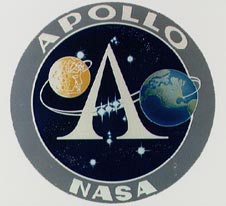

A few days ago, Google unveiled its latest moon shot: a contact lens with a built-in glucose sensor. As far as Google[x] projects go, the lens is right up there with flying wind turbines and balloon-powered Internet service (though maybe not quite on the same level as self-driving cars). There is an interesting twist to this whole story, though: the researchers who are working on this project at Google previously collaborated with Microsoft Research.
In 2011, Babak Parviz and Brian Otis were still at the University of Washington and published a case study (PDF) with Microsoft Research on how they built a prototype lens that can monitor blood glucose levels. In the paper, Microsoft describes the collaboration as being ‘close’ and going back several years.
“At the time I met Babak, he was starting to work on the functional contact lens, putting displays, or LEDs, into the contact itself, to create displays that sat on the surface of the eye,” Desney Tan, who was then a senior researchers at Microsoft Research, wrote at the time. “He was having a slightly hard time selling the idea, both in terms of feasibility, but also in terms of vision. What we added to the equation was basically a set of needs in all computing environments or in our projections of future computing environments that gelled very well with a particular technology.”
Tan, it turns out, is still at Microsoft Research, and in a somewhat unusual move, he took to Microsoft’s official blog the day after Google’s announcement to talk about Microsoft’s role in all of this. Clearly, Microsoft wasn’t going to let Google get all the praise for a project that was incubated with its support.
Like a good researcher, Tan is quite restrained in his words. He profusely praises the work of Parviz and Otis, but he also notes that Parviz, Otis and the team at Microsoft Research “tackled numerous hard problems around miniaturization, wireless power, wireless communications and biocompatibility.” The really hard questions around this project, he seems to imply, were answered with the help of Microsoft and not at Google[x].
Between the lines, he also sets up the difference between Microsoft’s and Google’s approaches to research in the context of what Google is doing with [x]: ”Our open research and deeply collaborative model allows us to work with the best academic and industrial researchers around the world,” Tan writes, “and we will continue to do so as we certainly believe in the philosophy that ‘we’ is smarter than ‘me.’” While Google[x] works in private and doesn’t openly cooperate with others, Tan seems to imply, Microsoft Research helps to push basic research forward by working with researchers around the world.
He goes on to list some of the projects Microsoft is involved in (HIV vaccines, brain tumor diagnostics, tuberculosis treatments etc.), but the overall message here seems clear: Microsoft does a lot of basic research and doesn’t often get the credit it deserves.
While most of the projects at Google[x] happen in private, though, it’s also worth noting that Google does quite a bit of work with universities around the world. Most of this is focused on its own core competencies and focuses on search-related technologies like natural language processing, machine learning and data mining, as well as basic computer science research.
Google’s Moon Shot approach may yield some breakthrough products in the long run and the smart lens project could improve the lives of millions of people. There is something to be said for participating in the larger research community, though, and Microsoft definitely does this more effectively than Google[x]. At the end of the day, though, Parviz and Otis decided that the best place for their research was at Google. If nothing else, that speaks to Google’s ability to convince researchers that they can have more impact at [x] than at their research universities and more easily bring their ideas from the lab to the real world (and Google[x] probably pays pretty well, too…).

ConversionConversion EmoticonEmoticon